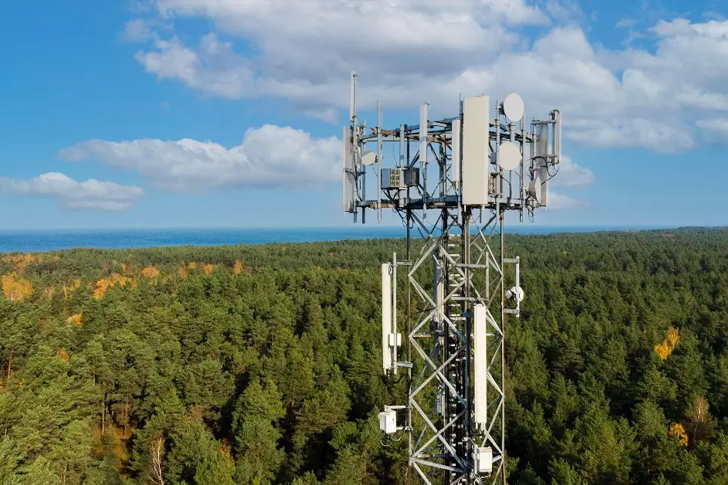Cell Tower Distribution and 5G for Improved Network Coverage
As the global telecom industry evolves, the expansion of 5G networks is becoming increasingly significant. The performance and reliability of 5G largely depend on various factors, including the strategic distribution of cell towers. This article delves into how the distribution of cell towers and the continuous deployment of 5G technology are crucial for improving network coverage, enhancing user experience, and supporting the burgeoning number of connected devices.

The Importance of Cell Tower Distribution
Cell towers are fundamental components of a mobile network as they host the equipment required to transmit and receive signals from mobile devices. Effective distribution of these towers is critical because it directly affects the coverage area and the quality of service subscribers receive. Insufficient or unevenly distributed cell towers can lead to dead zones (areas with no coverage), dropped calls, and slow data speeds.
Facts and Figures: Global Trends in Cell Tower Deployment
As of 2022, the United States alone has over 307,000 cell towers, according to the Federal Communications Commission (FCC). Increased demand for broader and faster network coverage has led to accelerated growth in tower deployment. Globally, countries like China and India are also rapidly expanding their network infrastructure. China, aiming to solidify its lead in the 5G race, had deployed approximately 792,000 5G base stations by 2021, covering major cities and rural areas alike.
Advancements and Distribution Challenges Associated with 5G
5G technology promises significantly faster data speeds, reduced latency, and higher capacity compared to its predecessors. However, the deployment of 5G involves challenges primarily because it operates predominantly on higher frequency bands. These high-frequency waves have a shorter range and are more susceptible to interference from physical objects like buildings and trees. Therefore, a denser network of cell towers is essential to ensure comprehensive coverage and to deliver the full benefits of 5G technology.
In response to these challenges, telecom operators are not only focusing on increasing the number of cell towers but are also upgrading existing infrastructure. Small cell technology, which involves the installation of smaller 5G nodes that can be placed on streetlights, buildings, and other structures, is being employed to enhance coverage in densely populated urban areas.
Real-World Impact of 5G and Enhanced Tower Distribution
The ongoing improvements in cell tower distribution coupled with 5G upgrades have a profound impact on both consumers and industries. For consumers, enhanced network coverage means faster internet speeds and more reliable service, particularly in high-density areas and at large events where many people use mobile devices simultaneously. In 2021, a study by Qualcomm predicted that 5G could generate up to $13.2 trillion in global economic output by 2035, offering new opportunities and efficiency improvements across various sectors.
Industries such as healthcare, automotive, and manufacturing stand to benefit substantially. For example, improved mobile network coverage and reliability are critical for the deployment of telemedicine, autonomous driving, and IoT (Internet of Things) devices which require continual and uninterrupted connectivity.
Case Studies: Success Stories in Network Improvement
Several successful case studies illustrate the benefits of improved cell tower distribution and 5G deployment. In South Korea, one of the first countries to roll out 5G on a large scale, users experience some of the fastest data speeds globally, with improved network reliability. The Korean government reported that the introduction of 5G services has led to innovative new services in streaming, gaming, and health sectors, stimulating economic growth and improving quality of life for its citizens.
In the United States, Verizon’s approach to augmenting existing infrastructure while deploying new towers strategically has allowed it to offer broad and effective 5G coverage. By 2021, Verizon had installed 14,000 new cell sites and aimed to install about 30,000 small cells to boost coverage and capacity further.
Future Outlook: The Evolution of Network Coverage
The future of mobile network coverage is promising yet demands continual adaptation and investment. The evolution from 4G to 5G and eventually to more advanced networks like 6G will require not only more cell towers but also smarter, more efficient technologies like artificial intelligence to optimize network management and resource allocation.
As we look forward, the collaboration between technology providers, regulatory bodies, and telecom companies will be crucial in overcoming the physical and regulatory challenges associated with infrastructure deployment. This cooperative approach will be essential for harnessing the full potential of future telecom technologies and ensuring that the benefits of improved network coverage reach all segments of the global population.
Conclusion
The efficient distribution of cell towers and the rollout of 5G networks are pivotal in enabling robust mobile network coverage. With strategic infrastructure investments and the deployment of new technologies, the telecom industry can provide enhanced connectivity solutions that cater to the increasing demands of consumers and industries worldwide. As network technology continues to evolve, embracing these changes will be key to unlocking new possibilities and driving forward global connectivity and economic development.







Recent Comments